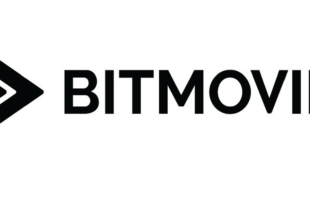Out of home TV (OOH), popularly referred to as Digital Signage Networks (DSN), is witnessing rapid advancement in India. It is still in its embryonic stage but over the last year or so, a number of OOH TV or screen network operators have emerged, targeting diverse venues such as shopping malls, retail chains, and other locations such as cafes, pubs, offices, airports and elevators. Apart from traditional billboards, companies in India are banking on technology advancements and ready to offer OOH options such as video walls, LED displays, mobile signages and remote access hoardings using broadband networks. From the TV broadcast industry’s perspective, the digital signage industry provides an opportunity to share content or expand their distribution. Mumbai-based screen network operator Elevator News Network Private Limited (ENN), delivers national and international content, including real-time news, entertainment and utility-based information such as traffic and advertising on digital screens situated in the elevators of office buildings. ENN has tied-up with likes of NDTV, which runs 24-hour general news channels in Hindi and English, plus a business news channel in India. The company is installing flat panel, high resolution 15” inch screens inside elevators, and leveraging its wireless-Internet platform to offer localized and customized advertising. On how to approach a market like India, which has 219 million households with 112 million TV homes, ENN’s director Ashok Sharma said his company doesn’t differentiate itself from the satellite TV channels or OOH TV screens. “The only distinctive point being that ENN offers unique features in a unique place to a unique audience,” said Sharma. “We are an Internet-based network. We collect our news from online sources and customize them as per viewers choice.” According to Sharma, the prime factors behind ENN’s launch in India are its growing economy, educational society and working class. Even as ENN propagates its 9am-9pm audience focus, the network doesn’t categorically differentiate the audience when it comes to different locations like commercial buildings, residential towers, 5-star hotels and shopping malls. For example, considering the news genre is more male-oriented in India, is the audience skewed towards males as far as content in commercial building elevators is concerned? On this, Sharma’s response: “We have never considered our viewers on the gender prospect. When we say ‘See Us At Work’ it becomes self-explanatory that we are the network for professionals in commercial buildings. At the same time on our screens there is something for everyone – live national and international news, video commercials, static commercials, stock market updates, weather updates along with the addition of a new features on traffic updates. Hence we claim that we are for everyone.” Like ENN, there are number of companies trying to cash in on the real-estate boom and out of home environment. Out of Home Media Pvt. Ltd leverages its business, in-store and leisure network to display audio-visual advertisements and engage urban consumers while they work, shop and play. Through its network, OOH Media guarantees marketers visibility and of course, direct connect with their consumers. Companies in India are also talking about delivering a media convergent solution, banking on Bluetooth technology, to evoke response from consumers once they are out of home and in front of digital signs. For instance, few months old SureWaves is upbeat about its media convergence solutions, that are built around a network of LCD Displays deployed out-of-home, powered by broadband and controlled from a central location. These displays can interact with personal mobile devices in their vicinity via Bluetooth. For its part, in an effort to optimize client’s ad spends, SureWaves has partnered UK-based Plasmanet, a communication software consultancy. The partnership is being leveraged to use highly visible, strategically placed screens, combined with key dynamics including demographics and socio-economic groups, to distribute messages to all or a selected few locations. One of the SureWaves’ offering’s main strengths is segment messaging and advertising down to a particular display. While a few of the network operators depend upon on content aired on cable and satellite or terrestrial TV channels, many of the companies are developing in-house content. For example, View24*7, a venture of Intellvisions Software Ltd, owns OOH TV channel Sellivision. Under this brand, it has two channels – in-store channel for supermarkets, the other being leisure channel for restaurants and pubs. Specific content is aired per the type of location and the socio-economic class. For example, in some restaurants, there is more information related to gadgets, holiday spots and quizzes; in some other high-profile restaurants, the content is related to bikes, cars and recipes. Providing an insight into the current status from a media agencies’ angle, Bangalore-based Kajal Malik, vice president Lintas Media Group said, “The industry is nascent in India and began operations in late 2006. OOH India and Livemedia are key players with close to 6,200 screens between them in the top 30 towns of the country. The VC funding these companies have seen in the recent past is in the range of US$33-50million and the current revenues for the leaders would be around US$2-$2.25million optimistically.” Starcom MediaVest group CEO (South Asia) and CEO – specialist solutions (Asia) Ravi Kiran said there is a bit too much hype at this stage about digital signage networks as a medium. “I would not want to hazard a guess in terms of ad pie share, but we believe that used smartly in conjunction with other media, DSN can effectively influence consumer behaviour and attitude for a lot of categories,” said Kiran, who added that the growth of OOH TV would depend on a lot of things, including client acceptance, development of industry standard metrics and a common currency. “Our overall outlook is positive, but we believe the media owners need to do some plain talk, instead of confusing clients with a lot of over claims.” Malik added that most of these screens are placed in retail outlets and in restaurants and pubs, the industry measures its performance on footfalls but the attention span of the consumers is a question mark. “Therefore it could be a good branding/ saliency medium but not an engagement like Internet (social networks) and mobile as of now,” she said. On the strengths of such OOH TV networks, Malik said the medium offers captive audiences who are not going to avoid ad breaks like TV. “There is an option for narrow-casting or selective relay of messages for example through LiveMedia (an OOH TV company) an advertiser can focus on McDonalds on all-India. Also, it allows audio-visual exchanges unlike static outdoor/point of sale.” At the same time, she said the cost of setting up screens is quite high and the metrics to evaluate in order to convince the advertisers on the efficacy of the medium are still among the major concerns. “Mainline media like TV and print would still be staple for delivering reach,” pointed out Malik. With more than 6,000 such screens getting installed over the last 12 months across the country, how do broadcasters view such developments? Paritosh Joshi, president, ad sales and distribution, Star India doesn’t consider OOH TV as a competitor medium at all. “Such (out of home TV) screens have been sprouting all over the world over the years. For example, in the UK, taxis do carry digital terrestrial signals or linear TV. Not only in small snippets but full channels. But the point of consideration is that the audience when exposed to content isn’t really seeking entertainment,” said Joshi. “As far as our business considerations matter, we seek certain appointment on part of the viewer. Be it TV, print, Internet or radio, consumers do seek information or entertainment when they interact with such mediums. So I don’t see fundamental viewing getting altered and such medium (OOH TV) digging into my business.” He added, “Yes, there might be some sampling of long-format content but we can’t expect any consistency in viewing habits when customers are in retail chains or restrooms. It’s more of an opportunistic consumption rather than a planned one. It doesn’t change any primary viewing behaviour. So it’s not a competitor medium at all,” said Joshi. It may not be a concern for a broadcaster in the general entertainment genre, but news broadcasters are definitely being seen at destinations like the Delhi and Mumbai Airports. From a news broadcaster’s point of view, New Delhi-based Sameer Manchanda, managing director of GBN, which has a joint venture partner in TV18 Group, said the audience for content depends upon the location. “If we consider a location like airport, then obviously, news or sports are definitely worth considering as people are waiting. The target audience in terms of numbers may be miniscule but it is still worth whom you are reaching out to (for branding opportunity). We are basically a news network. So being at these destinations also enables to connect with audiences in international terminals and especially in the case of english news channels,” said Manchanda. He added that his company pays for supplying feed at these locations and at some places like Mumbai domestic airport, the broadcaster has an exclusive arrangement. But Joshi says even if one considers one television rating point and the audience, which might be available at the airports, there is no comparison when it comes to reach. “Even if you consider one rating point of what a general entertainment channel or a news TV channel delivers and what an airport like one in Delhi and Mumbai delivers, even considering that every age-group views screens at any given point of time while at the airport, then also it’s quite marginal of mass viewing. So delivery of audience at these places is only about small niches. It’s about quality and not quantity,” said Joshi. “To me, by giving their news feed at airports, news channels are building their perception value among the media specialists or their clients (advertisers)!” Manchanda doesn’t argue on this and in fact says right now the critical mass in terms of the number of screens is too small. “So we are quite far off from offering a dedicated feed and benefit to advertisers,” he said. According to broadcasters, the idea of out of home TV screens seems to be more at point of purchase locations for stimulating the decision making, or even in certain environments where the media planners are aware of targeted demographic and hence they can deliver their ad messages. According to Lintas’ Malik, the consumption of OOH TV medium is largely linked to the consumer being on the move without access to a standard cable and satellite connection at home or office. “The traditional TV can never get killed by one medium. We foresee this medium to be a credible support medium especially closer to the purchase decision,” she said. The media specialists acknowledge that in addition to having the right content on the screen and getting the brand messaging customized to the context in which it is appearing, another critical element for the acceptance of OOH TV would be the measurement metrics in terms of not just consumer reach but consumer action. TVAplus
Ad – Before Content
Related Articles
Paramount+ and MTV announce Dating Naked UK has been renewed for a second series
Gyeongnam Culture and Arts Foundation Invests in Ikegami UHK-X700 4K-UHD HDR Cameras
LFP Media Transforms Video Experience and Maximizes Revenues with the Bitmovin Player
Iceland’s Glassriver options Reykjavik Noir trilogy from Lilja Sigurdardottir for series adaptation, picked up by broadcaster Síminn
OOONA Partners with Audio Description Associates, LLC
Fremantle has acquired the global distribution rights for Atlantic Productions’ Earth: A Year In Orbit









